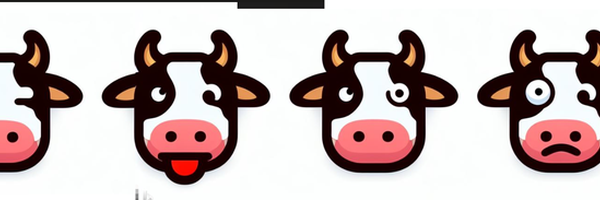Mood Machine
Grade 7
Presentation
No video provided
Hypothesis
What if I could train a machine to predict a person's mood for tomorrow?
I came up with this hypothesis because I know that Machine Learning can gather various factors from my survey and calculate the percentage of each that affects a person's mood. Then, it could estimate the mood, which would be useful.
Research
1. I met with two phycologist experts and discussed my project idea.
2. I researched 8 articles to better understand the mood and determine the most important parameters for my survey.
3. I gathered all the necessary information and created a survey for my participants.
Variables
I made a survey using Google Forms. The survey had 10 multiple-choice questions and covered the most important factors that influence mood.
- stress
- online social networks
- food
- mood
- quantity of water
- quality of sleep
- quantity of sleep
- physical activities
- social interactions
- achievements
Procedure
After organizing and checking our survey answers, my dad and I created a program using Python with Pandas and sci-kit-learn modules to teach our decision tree.
We took our 260+ answers and split them into two parts:
70% for teaching our model
30% for testing how well it learned.
The teaching part helps the model learn, and the testing part checks if it learned correctly.
Once our model is all smart and trained, we use the test part to predict the mood (or class). We then compare these predictions with the real moods to see how accurate our model is! It's like our model showing off its brainpower.
Observations
I have collected information on many parameters: stress, online social networks, food, etc. I tried to use all this information to teach our model, but it got confused and couldn't do better than 45%, which is not that great. It turned out that having too many things to learn about made it difficult. So now I used only 3 parameters to make it less confusing ( sleep, water, social interactions)
Also, I learned that it is hard to keep a small group interested for a long time. Next time I will invite more people and ask them to join the fun for just 1-2 weeks.
Analysis
- On average, our model is accurate in a range of 55% and 70%. I can make it better by adding more data to its learning.
- I also received feedback from our participants that as they completed the survey, they became more aware of their mental health and began to take better care of it.
- Using our smart model, we discovered that the amount of sleep you get is super important, making up 47% of why you feel a certain way.
- Being social and happy with others is the second most important thing, with 20%. Check out this picture showing how important these things are!
Conclusion
- Project Goal: Built a decision tree model to predict mood based on various daily life factors.
- Data Collection: Collected data on parameters like sleep, food, exercise, stress, and online social activities.
- Model Training: Used Python with Pandas and scikit-learn to train a decision tree model.
- Major Findings: Sleep length was the most important factor (47% correlation) influencing mood, followed by positive social interaction (20%).
- Accuracy: Model accuracy averaged around 55%, with the best result reaching 70%. The model could be improved by adding more data to the training set.
- Challenges: Attempted to include more parameters (stress, online social networks), but accuracy dropped below 45%, indicating that too many parameters made it tricky.
- Learning Experience: Realized the challenge of keeping a small group engaged for an extended time. Proposed inviting more people for shorter periods with better incentives.
Our project successfully made a decision tree model to predict mood. We also created a simple website where people can enter their daily activities, and it tells them their mood and suggests improvements. Though we faced challenges with extra factors, we learned a lot for the future. Overall, our main idea of predicting mood with a decision tree was proven right, and our website adds a helpful touch.
Application
The MOOOD MACHINE model aims to predict mood in children and individuals, enhancing emotional awareness and fostering healthy relationships. By analyzing factors like sleep, social interactions, and activities, the model can generate insights into mood patterns, enabling early intervention and support. This proactive approach promotes emotional well-being and fosters a more compassionate society, empowering individuals to recognize and manage their emotions.
Sources Of Error
Confusion in Answering Questions:
Sometimes, people were unsure how to answer a few questions at the start.
To improve: Next time, I will make sure to explain the questions more clearly.
Participants Not Paying Attention:
Some participants were not very interested or engaged.
To improve: Have more participants for a shorter time, and offer better motivation like prizes.
Too Many Factors to Consider:
There were too many things to think about (variables).
Citations
-
Happiness & Health: The Biological Factors- Systematic Review Article. mental.jmir.org. (accessed 2024-03-09)
-
Stanford University. "Effects of Changes in Water Intake on Mood of High and Low Drinkers." Stanford University News, 13 June 2019. https://www.ncbi.nlm.nih.gov/pmc/articles/PMC3984246/
-
Jacka, Fanny et al. "Relations Between Sleep Quality and Mood: Ecological Momentary Assessment Study." BMJ, vol. 369, no. m2382, 2019. https://mental.jmir.org/2019/3/e12613
-
AST. "How People Want to Feel Determines Whether Others Can Influence Their Emotions, Stanford Psychologists Find." American Society for Testing and Materials, ast.org. (accessed 2024-03-09)
-
American Psychological Association. "Food and Mood: How Do Diet and Nutrition Affect Mental Wellbeing?" PsycNet, psycnet.apa.org. (accessed 2024-03-09)
-
Steptoe, Charles. "An Exercise in Personal Exploration: Maslow’s Hierarchy of Needs." Frontiers in Psychology, vol. 5, no. 996, 2014. https://www.semanticscholar.org/paper/An-Exercise-in-Personal-Exploration-Poston/d9ed1f0e7707a2e27d5927fee03b692f63687c47
Acknowledgement
Natalie Bergman, a Registered Psychologist, Registered Play Therapist™ (RPT™) with the Association for Play Therapy, and a Director at Calgary Reconnect Counselling Group.
Tatiana Oshchepkova, MSW, RSW, Clinical/Medical School work
Nagir Abdullayeva BSc. MD

